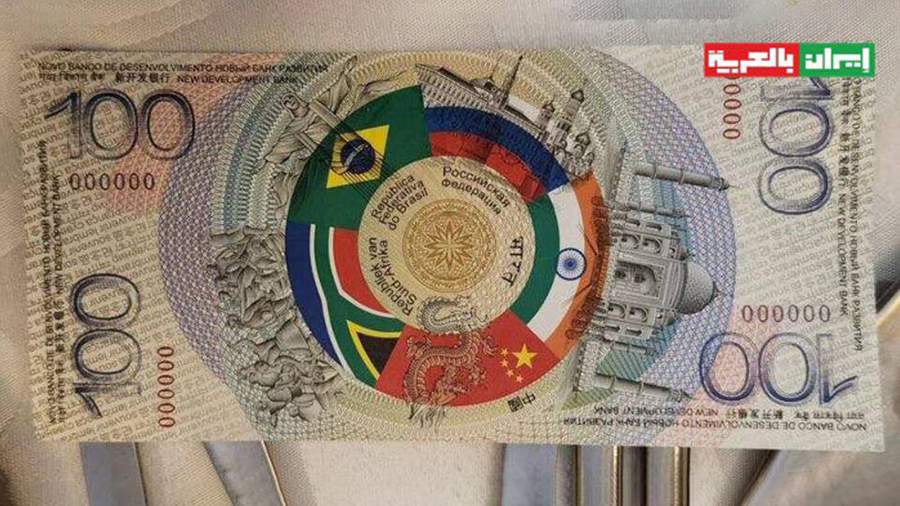
BRICS Plus And A Multipolar Financial System
By Faiza Abid
For nearly eight decades, the US Dollar (USD) has remained the primary global reserve currency. However, in recent times, due to growing concerns over dependency on the greenback, countries are looking towards alternative currencies for trade and other transactions, a phenomenon recognised as de-dollarisation or the end of the reign of dollar’s uncontested hegemony. According to IMF data, the dollar’s global share of central bank foreign exchange reserves has significantly reduced to 59 percent in 2023 from 72 percent in 2000. JPMorgan’s Global Research report states, “The risk of de-dollarisation, which is a periodically recurrent theme throughout post-war history, has returned into focus due to geopolitical and geostrategic shifts.”
Acceleration in the de-dollarisation trend is propelled by the amalgamation of political, economic, and strategic factors. For example, in the aftermath of the Russian invasion of Ukraine, the US enacted a cascade of sanctions against Moscow, which froze nearly 50 percent of Russian exchange reserves and excluded primary Russian banks from SWIFT. However, these economic sanctions, deemed as “weaponisation” of the dollar, have ironically led to the rise of a alternative financial architecture, primarily advanced by the two biggest geopolitical contesters of the US – Russia and China.
Russia has expeditiously increased its use of the Chinese Yuan to surpass the utilisation of the dollar as an intermediary. By the end of 2022, the share of Yuan reserves in the Russian National Wealth Fund marked 60 percent, and over 80 percent of the trade settlement between Beijing and Moscow now takes place in local currencies. Pakistan is also among the countries that have started to accept Yuan payments. Recently, Pakistan made its first-ever payment in Yuan in a government-to-government deal with Russia to import crude oil.
Moreover, Argentina has shown advancements in substituting the dollar for settling import payments. Argentina’s imports, denominated in Yuan, surged to as much as 20 percent in April and May 2023, with authorised transactions worth $2.72 billion. India’s recent first-of-its-kind oil trade deal with UAE settled in Indian Rupee is another example. With the transaction having been successful, a system of real-time payment between the two nations is under development.
Furthermore, the central topic of the 15th BRICS Summit was to redefine the role of BRICS in the global financial system. The emphasis was made on bilateral clearing and the use of local currencies in financial transactions between BRICS members and their trading partners. BRICS, set to include new members in January 2024, is poised to represent 36 percent of global GDP, surpassing the G7. According to Economist Jean-Joseph Boillot, it depicts the potential of the bloc to bring about sizeable changes in the global economic order.
Internationalisation of other currencies would generate a diverse system of currency reserves, contributing towards global economic stability by diminishing the susceptibility to external shocks and fluctuations. Additionally, it would enhance the financial autonomy of the issuing nations by preventing external interventions and providing greater flexibility in terms of policymaking. However, while assessing the global shift away from the dollar, it is crucial to analyse the risks and challenges attached to the internationalisation of other currencies.
Firstly, generating a viable substitute for the dollar presents a mounting challenge. While the Euro serves as a realistic alternative, what undermines its appeal is the fragmentation of European Sovereign debt markets. Similarly, Yuan faces the challenge of capital controls and limits to convertibility. Likewise, deteriorating Chinese legal protection and the underdeveloped bond market depict that the Yuan is far from reaching the required degree of stability and, most of all, acceptability.
Secondly, de-dollarisation could potentially lead to volatility in exchange rates, adversely affecting trade and investment for states with the least developed financial markets. Thirdly, developed economies, including China, Japan, and the UK, hold a sizeable amount of the US treasury securities, ascertaining the global dominance of USD. Besides, states like Pakistan, which are dependant on Western-backed financial systems due to their economic vulnerabilities, also face the challenge of deciding whether to become a party to the de-dollarisation process or not. Should the dollar lose its reserve currency status, it would result in higher debt servicing due to increased interest rates on the government debt to compensate for exchange rate fluctuations. Likewise, developing nations with trade deficits would not benefit from de-dollarisation as they would become dependent on the stability and policies of the alternative currency’s issuer.
Lastly, creating a rival global currency to the dollar is a formidable task. For instance, de-dollarisation attempts at BRICS seem challenging due to economic, political, and cultural diversity within the members, making consensus-based decision-making a daunting task.
Thus, given the comparable advantages that accrue to a ubiquitous currency and the extensive US global network of alliances, rapid de-dollarisation is full of obstacles. However, it is not an insuperable fantasy. A more probable and realistic evolution in the coming years is the replacement of the unipolar financial system with a more diversified and multipolar system, reflecting the economic and political realities of the current times. This would give rise to regionalism, forming distinct economic and financial spheres of influence with various currencies and markets assuming key positions.
Faiza Abid is a researcher at the Centre for Aerospace and Security Studies (CASS), Lahore
